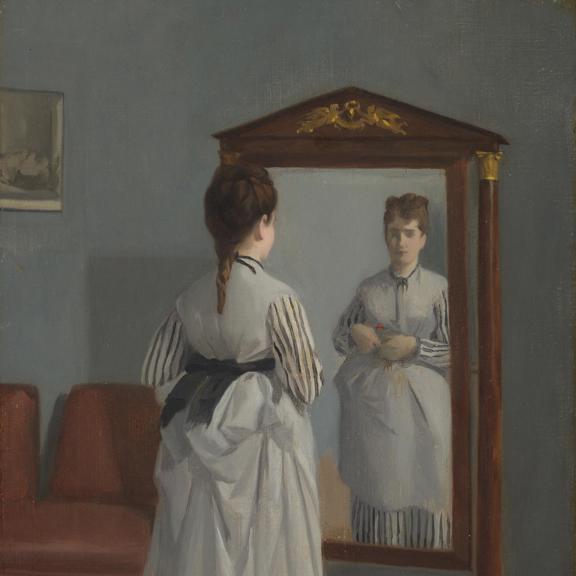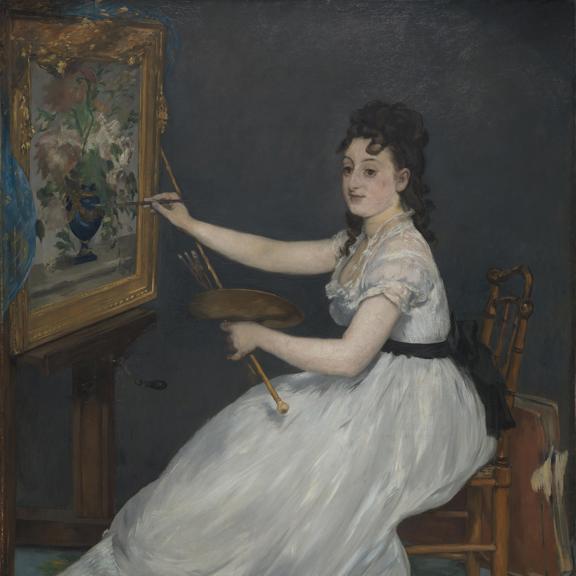Eva Gonzalès (1847–1883) was the daughter of Emmanuel Gonzalès (1815–1887), writer and dramatist, and Marie Céline Raguet (1823–1880), musician and singer. Her parents held soirées attended by prominent writers and artists. While initially taught at home, from early 1866 she studied in the women-only studio run by Charles Chaplin (1825–1891), an artist known for his portrayals of women painted in an eighteenth-century style. Unusually, she would have been able to study from the life model at a special class held early in the morning. In February 1869 Belgian: Stevens, Alfred (1823 - 1906) introduced her to Edouard Manet, who accepted her as his only formal pupil. In the summer of that year he embarked on his monumental portrait of her seated at her easel, French: Manet, Edouard, //Eva Gonzalès// (NG3259), which he exhibited at the Salon of 1870. Gonzalès made her debut at this Salon with three works, including The Bugler (1869-70, Musée de Gajac, Villeneuve-sur-Lot). Like Manet, Gonzalès continued to exhibit at the Salon, including her masterpiece, A Theatre Box at the Italiens (about 1874, Musée d’Orsay) which, rejected in 1874, was exhibited to great acclaim in 1879. Lessons with Manet were interrupted by the Franco-Prussian War and Paris Commune (1870–1) but throughout the 1870s Manet made regular Sunday visits to Gonzalès’s studio in her parents’ house, during which their relationship developed from teacher and pupil into a dialogue on a more equal footing. Manet and Gonzalès died within a few weeks of each other, Gonzalès from an embolism following the birth of her son in spring 1883.
By the time of her premature death Gonzalès had established herself as an artist who excelled in her portrayals of quiet bourgeois life, often featuring her younger sister Jeanne, also an artist. Much of her work treated subjects similar to those of the Impressionists, but focussed in particular on the cloistered life led by middle-class women at this period, from visits to the milliner to walking in the park. With their own limited opportunities, the life and work of women artists at this period mirrored the lives of those they portrayed. Gonzalès handled such subjects with graceful and flowing brushwork and a great sensitivity of colour. She excelled in particular in the use of pastel, a technique she learned during her time with Chaplin, and her use of which almost certainly influenced that of Manet.


